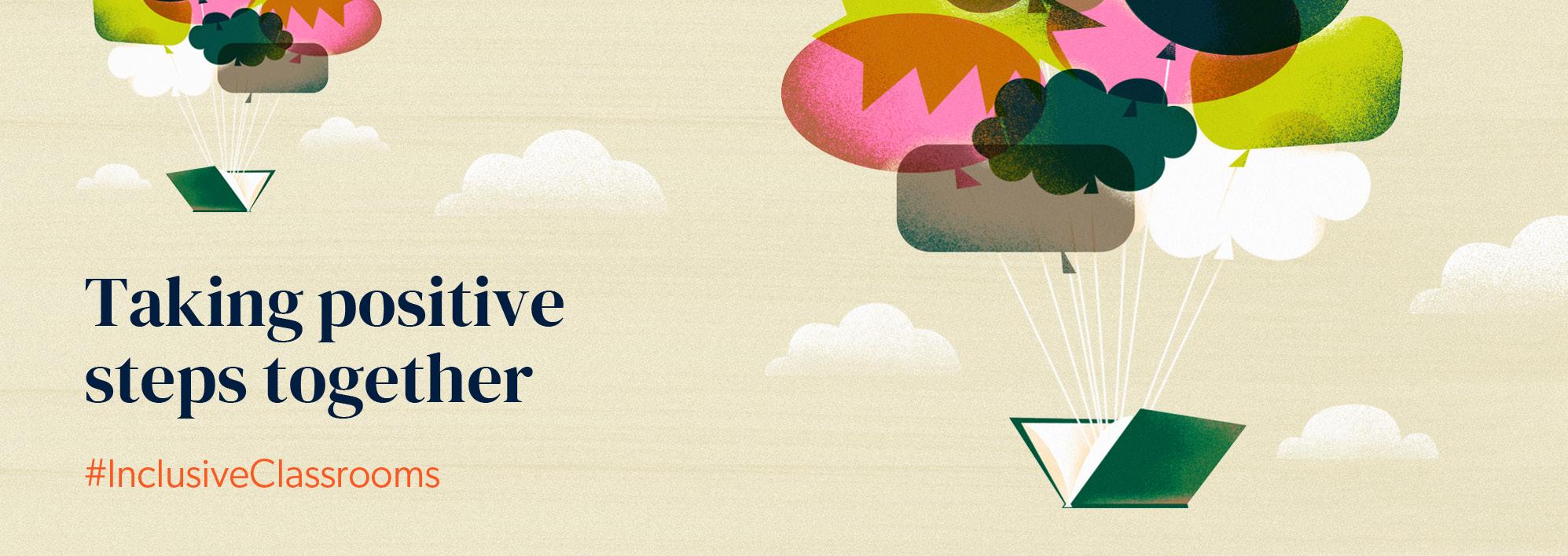Throughout my teaching career of almost 18 years, I have always thought of myself as being acutely aware of the need to make students feel welcome and safe in my classroom. It seems obvious that the last thing we teachers would want to do is to harm someone’s sense of self-worth as we teach. But just how aware are we?
I love having big, bright displays in my classroom, horror vacui style. Though they regularly attract compliments and attention, several years ago, a colleague commented on a lack of gender balance on my ‘wall of fame’ display which proudly shows off athletes, actors, singers and celebrities from the Spanish-speaking world. I noted that 50% of the famous people who featured were male and 50% female, to which my colleague responded that the gender spectrum is more diverse and complex than that portrayed in the display. So, in the name of diversity, I did my research and found some new faces that challenged the gender binarism that previously characterised the display.
The truth is, of course, that diversity is found in so many areas including gender, race, religion, disability, physical appearance, and language! As language teachers, we not only have a duty, but also a great opportunity to convey diversity in the classroom, perhaps even more so than other subjects, as the language we teach richly brings together different societies, cultures and sensibilities to the classroom.
It is through our lessons, classroom displays and the materials we use in school that our students will learn not just to read or write in a foreign language, but how they may better understand themselves through others, and find their place in the world during their challenging teenage years.
How can we make our classroom and lessons more inclusive? Here is what I try to have in mind while planning lessons or writing resources:
1. Images
As far as possible, any pictures on displays, PowerPoints or worksheets should show diversity. This usually only requires a few more clicks of the mouse when finding images online. For example, if I want to include the Real Madrid football team in a display or worksheet, the first thing that appears in an online search is the male team. Finding an image of the female team and placing it next to the male one will make sure everyone can feel inspired and represented. Having para-athletes is a great idea too for making resources more inclusive.
2. Families and friendship groups
When teaching family members and reading about family descriptions, it is beneficial to include different family structures, in addition to the ‘traditional’ nuclear family. The inclusion of single parents, parents of the same gender, blended families, foster families and multi-racial families can really resonate with students. As many of us are also tutors, we can often see first-hand the positive impact this type of representation can have.
3. Culture and religion
With experience, this point is a straightforward one for a language teacher to keep in mind. As I teach Spanish, a range of religious and secular festivals like Día de Muertos, Las Fallas, La Tomatina or Feria de Abril regularly come up in lessons, and all give great insight into cultural diversity. Christmas is also frequently mentioned in the classroom, and though a lesson on Christmas vocabulary at Key Stage 3 can be a good idea, limiting the discussion to the words for ‘gift’, ‘tree’ or ‘turkey’ might be far from inclusive. Reference to other religious and non-religious celebrations and how they coexist is much more effective and inclusive.
4. Inclusive language
The debate about inclusive language continues to rage. The Spanish language, one of the many which categorises nouns and adjectives into binary genders, may seem far from inclusive to many people. LGBTQIA+ groups and the LatinX movement in America promote the use of x or e as alternative endings to traditional o and a, and these ideas are gaining traction. The Real Academia Española (RAE) states that the Spanish language already has mechanisms to show inclusivity, and does not agree with the replacement of the -o and -a endings. Personally, I think the RAE will eventually acknowledge these linguistic shifts and attempt to standardise them, resulting in them being taught in the classroom as grammatical rules. Until then, as society forges ahead of its cultural institutions, I, like so many teachers, already mention inclusive endings to my students in an informal manner to raise cultural and linguistic awareness. For example, ‘a tall child’ in Spanish is un niño alto (masc.), una niña alta (fem.) and un niñe alte or unx niñx altx (inclusive), both of which are common, particularly on social media.
The four steps above are things that could be implemented in any classroom as a step towards greater inclusivity.
After graduating from Granada University in English and linguistics, Jose Garcia has been working in a large secondary school in the North West of England for 18 years, where he is deputy head of department. As well as teaching languages across all Key Stages, he is the author of several textbooks, including in the Oxford University Press ¡Claro! series, and critical film guides. A conference speaker, creative resource maker and innovator in the classroom, he can be found on Twitter @misterjgarcia.

